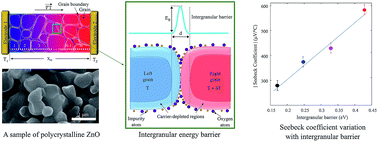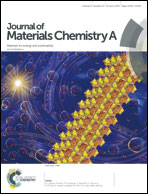Linking thermoelectric generation in polycrystalline semiconductors to grain boundary effects sets a platform for novel Seebeck effect-based sensors
Abstract
Data available on the thermoelectric properties of polycrystalline semiconductors are inconsistent, riddled with gaps, and ascribe stronger Seebeck effects to polycrystalline samples rather than single crystals. Here, by demonstrating the profound contribution of grain boundaries to the Seebeck voltage generation, we link the thermoelectricity in polycrystalline semiconductors to the grain boundary effects therein. The magnitude of this contribution is analytically related to the height and width of intergranular barriers, which are extrinsic properties in a polycrystalline sample and can be affected by external physicochemical parameters. Occurrences of chemo- and piezo-thermoelectric effects are analytically predicted and experimentally verified by the results of measurements on SnO2 and ZnO samples with different nanostructures under various conditions. The presented model sets a platform for designing a range of novel Seebeck effect-based sensors, and unveils the potential of polycrystalline semiconductors with appropriately designed intergranular barriers as thermoelectric materials.



 Please wait while we load your content...
Please wait while we load your content...